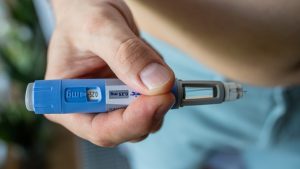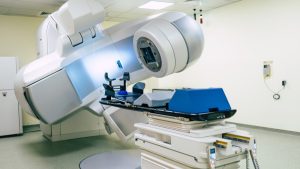Articles / Fatty liver disease: The canary in the coal mine

0 hours
These are activities that expand general practice knowledge, skills and attitudes, related to your scope of practice.
0.5 hours
These are activities that require reflection on feedback about your work.
0 hours
These are activities that use your work data to ensure quality results.
These are activities that expand general practice knowledge, skills and attitudes, related to your scope of practice.
These are activities that require reflection on feedback about your work.
These are activities that use your work data to ensure quality results.
While sometimes described as ‘just fatty liver’, this disease is like the “canary in the coal mine”, signalling metabolic dysfunction and potential for serious health problems down the track, says hepatologist Professor Simone Strasser, head of Royal Prince Alfred Hospital’s hepatology and gastroenterology department, specialist in the Australian National Liver Transplant Unit, and member of the team that produced the new ‘Recommendations for the assessment of metabolic dysfunction-associated fatty liver disease (MAFLD) in primary care’ consensus statement.
Early recognition and liver risk stratification can not only help reduce the risk of major cardiovascular events, but also of conditions like cirrhosis and liver cancer.
Its former name (non-alcoholic fatty liver disease or NAFLD), implied that patients who drank alcohol or had other liver diseases did not have this condition, Professor Strasser says.
The new name—metabolic dysfunction-associated fatty liver disease (MAFLD)—better reflects its actual pathophysiology.
“We now recognise that fatty liver is a liver dysfunction that’s related to metabolic dysfunction: to insulin resistance and the buildup of free fatty acids in the liver that can lead to inflammation, fibrosis, cirrhosis, and liver cancer,” Professor Strasser explains.
This is the case “whether or not you’ve got alcohol or viral hepatitis or autoimmune hepatitis or any other cause of liver disease as a concomitant factor.”
Recognition of the condition’s metabolic nature helps doctors manage contributing factors more effectively, she says.
For example, you can target therapy around:
Its importance is sometimes downplayed, but fatty liver can actually indicate a significant risk of disease.
“I like to think of fatty liver being the canary in the coal mine, and it may predate the development of overt diabetes or overt cardiovascular disease,” Professor Strasser says.
“We’ve got good data that it’s associated with future major cardiovascular events and for the future development of type 2 diabetes. So this is a wakeup call both to the GP but also the patient to say metabolically, this person is not healthy.”
“We may not be too worried about their liver at the moment, but we’ll be worried if they’ve got other risk factors such as alcohol or something else going on. And we can really focus then on turning things around and getting that person back healthy.”
Unlike the name NAFLD, which implies that fatty liver disease is a diagnosis of exclusion, the new term better indicates that it is actually a positive diagnosis, Professor Strasser says. “If you’ve got obesity, type 2 diabetes, or two metabolic risk factors like hypertension, hyperlipidaemia, increased waist circumference, et cetera, and you’ve got evidence of fat in the liver, you have MAFLD.”
You don’t need abnormal liver tests to make the diagnosis, she stresses, nor do you always need an ultrasound to provide evidence of fat in the liver.
“If someone has severe obesity and diabetes, they’ve got an over 90% chance of having fatty liver. So you can actually assume that person has fatty liver and therefore go the next step.”
That said, ultrasound results can help convince patients to do something about their weight.
“If you tell a patient that their ultrasound is abnormal and shows this is a condition—that you aren’t actually just healthy and overweight, that you’ve got risk for diabetes, risk for cancer, and all the rest of it—it does help to focus the mind a little bit that it’s significant. It’s not just people hassling them about their weight.”
“You can also have fatty liver in the absence of overweight or obesity. And that’s called lean MAFLD,” she adds. “People can have a normal BMI or just be in the mildly overweight range and still have metabolic associated fatty liver disease because they have insulin resistance related to sedentary lifestyle or poor diet or genetic factors or other things.”
Younger people are increasingly affected by fatty liver due to the rise in child and adolescent obesity rates.
“We’re going to see a decrease in the age that people present with liver cancer, with cirrhosis, with liver failure, related to this condition,” Professor Strasser says.
“Fatty liver disease is becoming the number one reason for needing a liver transplant in North America and in the future in Australia as well, particularly as we’ve treated a lot of people with viral hepatitis.”
Identifying patients at high risk of serious liver disease early enables them to access treatments that could delay progression and help stop complications from developing.
Sometimes, people are first diagnosed with fibrosis “when they decompensate and they’ve suddenly developed ascites,” Professor Strasser says.
“And we do see people with longstanding diabetes and obesity suddenly developing abdominal pain, and they’ve got a big liver cancer, because no one has been thinking about their risk or undertaking regular surveillance. And that’s a disaster.”
Liver risk stratification is based on the amount of fibrosis in the liver, she says.
She recommends GPs start by calculating the FIB-4 score.
“It’s just based on age, AST, ALT, and platelet count,” she explains. “So you do need a full blood count. And you can plug them into a calculator. They’re very easily available online or on apps.”
If the FIB-4 score is less than 1.3, “you can be very confident that person does not have significant fibrosis,” she says.
Secondary testing is recommended if the FIB-4 score is between 1.3 and 2.7.
Vibration-controlled transient elastography, known as Fibroscan®, is widely available through liver clinics but is not currently Medicare-funded.
“And Fibroscan® has been very well validated for further stratifying that group of patients where that FIB-4 is over 1.3,” Professor Strasser says.
“If the liver stiffness measurement on Fibroscan® is below 8 kilopascals, we’re happy that patient does not have significant fibrosis.”
Many ultrasound practices also offer liver stiffness tests as part of a liver ultrasound, but they use a different technology (known as shear-wave elastography) which is less validated, Professor Strasser says. “The numbers are not as well validated and the cutoffs are different. And we do get reports that don’t make sense when clearly the patient’s got cirrhosis, and the report will come back and say the shear-wave was actually very low and we don’t think there’s fibrosis yet.”
“Those practices will often say that they’ve done a Fibroscan®, but they actually haven’t. So we’re less comfortable with it, but if shear-wave is all you’ve got access to, it’s a reasonable screening tool.”
An alternate way to assess liver fibrosis when the FIB-4 is over 1.3 could be via one of two blood tests: ELF score or Hepascore. “And they look at a whole lot of other turnover factors to do with fibrosis development in the liver or in other organs even.”
Both are available through private laboratories in some parts of Australia but are not Medicare-funded.
Professor Strasser recommends referring patients to a liver specialist if they have:
The new consensus statement recommends prompt specialist referral if:
Based on this educational activity, complete these learning modules to gain additional CPD.

Menopausal Hormone Therapy - What Dose of Estrogen is Best?

Cardiovascular Benefits of GLP1s – New Evidence

Oral Contraceptive Pill in Teens

RSV and the Heart


Modified but kept in place
Eliminated entirely without replacement
Maintained as is
Completely replaced with an alternative system
Listen to expert interviews.
Click to open in a new tab
Browse the latest articles from Healthed.
Once you confirm you’ve read this article you can complete a Patient Case Review to earn 0.5 hours CPD in the Reviewing Performance (RP) category.
Select ‘Confirm & learn‘ when you have read this article in its entirety and you will be taken to begin your Patient Case Review.
Menopause and MHT
Multiple sclerosis vs antibody disease
Using SGLT2 to reduce cardiovascular death in T2D
Peripheral arterial disease
